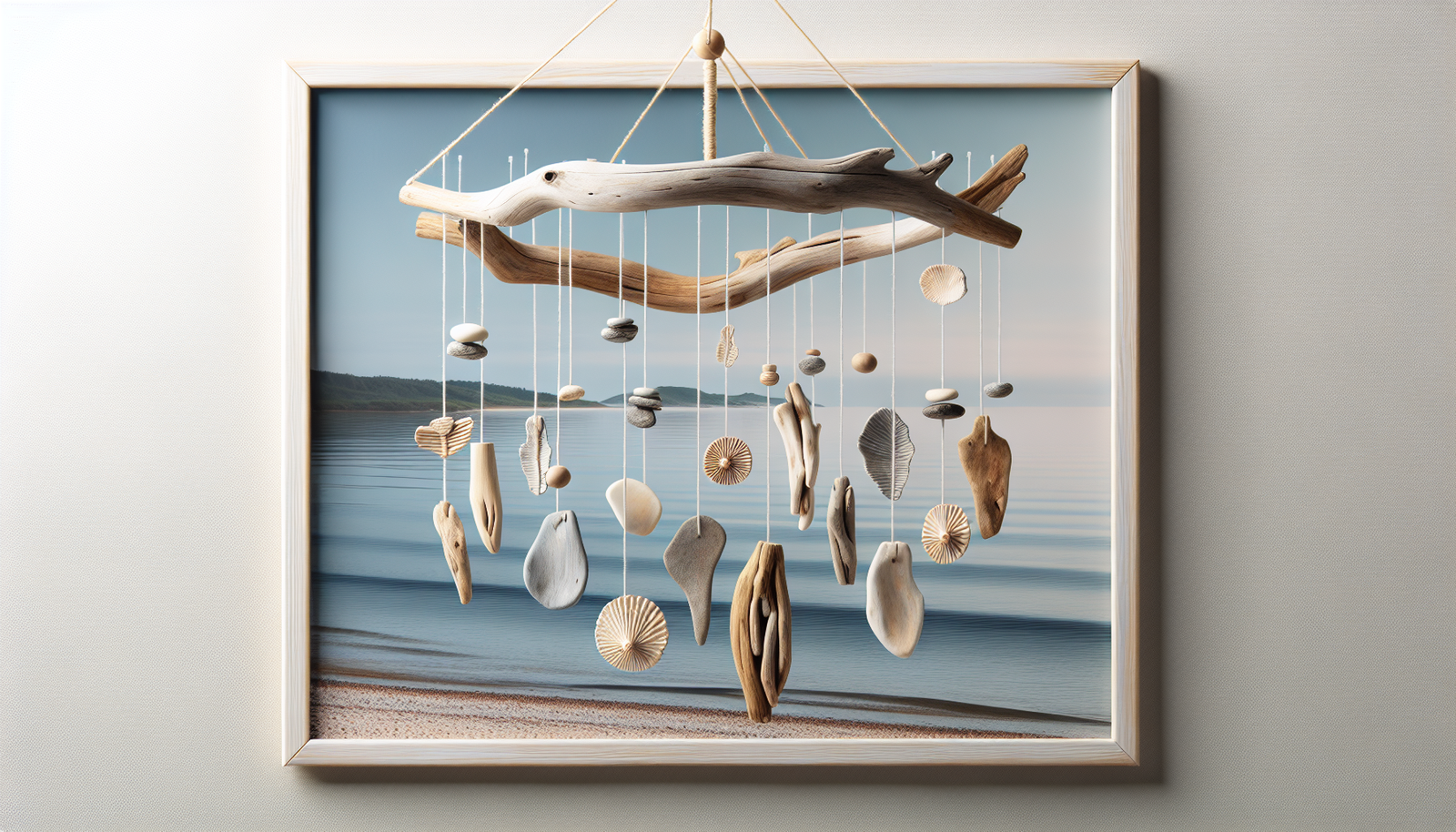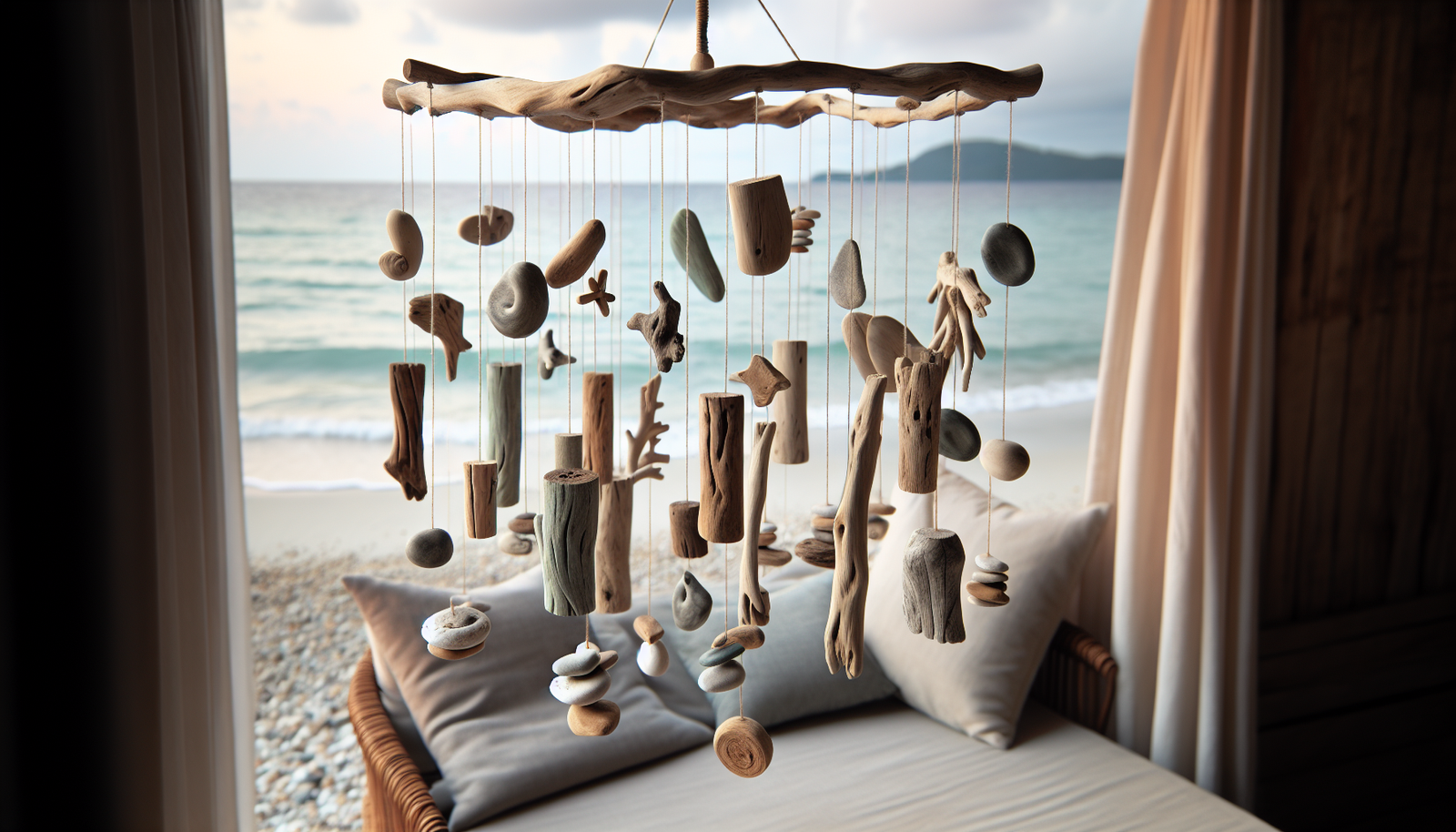Have you ever imagined turning a simple piece of driftwood into a charming decorative feature for your nursery? Crafting a driftwood nursery mobile might just be the creative endeavor you didn’t know you needed. It’s an extraordinary way to bring a touch of nature indoors while also engaging your artistic side. This article is designed to guide you through everything you need to know about this delightful craft, from collecting driftwood to assembling it into a mobile that will grace your nursery with its beauty and warmth.
What is a Driftwood Nursery Mobile?
A driftwood nursery mobile is an artistic creation made from pieces of driftwood that hang in a balanced composition, often fitted with additional elements like seashells, feathers, or small trinkets. These mobiles are not only aesthetically pleasing but also serve to stimulate your baby’s visual senses with their gentle movement and natural textures.
Why Choose Driftwood?
Driftwood, shaped by the natural elements, offers a rustic charm that’s hard to replicate with manufactured materials. Its uniqueness, combined with its origin story of being carried along shores by the sea, makes every piece slightly different and special. Driftwood is also a sustainable and eco-friendly option, as it is naturally occurring and often simply requires further cleaning and drying to be used in crafts.
Benefits of a Nursery Mobile
Nursery mobiles are not just decorative; they stimulate a baby’s development. The slow, gentle movement of a mobile aids in visual tracking and eye coordination, important skills for your baby’s development. The natural colors and textures of driftwood can engage a baby’s curiosity and encourage sensory exploration.
Materials Needed for a Driftwood Nursery Mobile
Embarking on creating your very own driftwood nursery mobile requires some specific materials. Here’s a comprehensive list to help guide you on your creative journey.
Essential Materials
- Driftwood Pieces: These can be collected from beaches or purchased from craft stores.
- Strong Twine or Fishing Line: For hanging your driftwood pieces.
- Hooks or Eyelets: To attach the lines to the driftwood.
- Scissors or a Craft Knife: For cutting twine or thread.
- Drill with Small Bits: This is optional but useful for making holes in your driftwood pieces.
Optional Add-Ons
- Beads or Shells: To add extra decorative elements to your mobile.
- Feathers or Fabric Strips: For a touch of softness.
- Paints or Varnishes: If you want to add color or protect the wood.
- Sandpaper: To smooth any rough edges on your driftwood.
Table: Material Checklist
| Material | Purpose |
|---|---|
| Driftwood Pieces | Main structure of the mobile |
| Strong Twine | Hanging the pieces together |
| Hooks or Eyelets | Securing twine to driftwood |
| Scissors or Craft Knife | Cutting twine |
| Drill | Drilling holes for easy assembly |
| Beads and Shells | Decorative elements |
| Feathers/Fabric Strips | Soft, tactile additions |
| Paints or Varnishes | Coloring or protecting wood |
| Sandpaper | Smoothing driftwood |

Sourcing Your Driftwood
Finding the perfect pieces of driftwood can be both a fun adventure and a relaxing experience. Here are some tips on how to source driftwood.
Beachcombing for Driftwood
One of the best places to find driftwood is a local beach. Early mornings or after a storm, the shores are often filled with fresh finds. Make sure to choose pieces that are not brittle and have no sharp, splintering edges.
Environmentally Conscious Collection
While collecting driftwood, it’s essential to be mindful of the ecosystems you are in. Avoid removing wood that seems to be a part of a natural habitat for animals or plants.
Craft Stores: An Alternative Option
If you’re not near a coastline, or prefer a selection of pre-cleaned and treated driftwood, many craft stores or online shops offer driftwood ready for crafting. This can be especially useful if you’re looking for specific shapes or sizes.
Cleaning and Preparing Driftwood
Once you have your driftwood, ensuring it is clean and ready for crafting is a necessary step. Proper preparation will ensure your mobile is safe and long-lasting.
Cleaning Driftwood
Rinse Thoroughly: Begin by rinsing your driftwood pieces under running water to remove salt, sand, and debris.
Soak in a Bleach Solution: To kill any bacteria or organisms, soak the driftwood in a mixture of one part bleach to nine parts water for a few hours. Ensure proper ventilation while doing this.
Rinse Again: After soaking, rinse the pieces thoroughly to remove any bleach residue.
Drying and Treating
Air Drying: Allow the pieces to dry naturally in the sun. This might take several days, depending on the size.
Sanding: Use sandpaper to smooth any rough spots. This will make it safer to handle and more pleasing to the touch.
Sealing: If desired, apply a clear varnish or sealant for added durability and a finished look.

Designing Your Mobile
Designing your driftwood nursery mobile is where your creativity can truly shine. Consider the overall look and feel you want before assembling the pieces.
Conceptualizing the Design
Think about the theme you wish to convey in your nursery. Do you prefer a natural, beach-inspired aesthetic, or are you leaning towards a whimsical, colorful design? Your choice will direct the additional materials you select, such as paints or decorative elements.
Balancing Your Mobile
Balancing is crucial in any mobile. Plan how you will position the driftwood and additional elements to ensure it hangs evenly and turns smoothly. You may need to experiment with the weight distribution by hanging objects at different lengths.
Assembling the Driftwood Mobile
Step by step, assemble your mobile to achieve the desired look and functionality.
Steps to Assemble
Plan Your Layout: Before attaching anything, lay out your design on a flat surface. Play around with arrangements and lengths of hanging objects until you find a balanced composition.
Attach Hooks or Eyelets: Drill small holes where necessary and screw in hooks or eyelets to allow for easy attachment of the twine.
String Your Elements: Cut lengths of twine or fishing line, and begin tying your driftwood pieces together according to your planned design.
Add Decorations: Once the main structure is complete, add beads, shells, or feathers along the twine for added interest.
Test and Adjust: Hang your mobile temporarily to ensure it balances and spins freely. Adjust as necessary.
Safety Considerations
Ensure all elements of the mobile are securely fastened, with no loose parts that could pose a hazard. Hang the mobile out of your baby’s reach to prevent accidental pulling or tangling.
Tips for Customization
One of the joys of crafting a driftwood nursery mobile is making it truly unique. Here are some tips for customization.
Adding Personal Touches
Consider personal touches, such as incorporating meaningful charms or painting motifs and patterns that are special to your family. For instance, you could paint stars or animals significant to your baby’s nursery theme.
Theme Variations
Themes are a great way to lend a specific aesthetic to your mobile. Whether you’re inspired by the sea, a woodland fairy tale, or a minimalist décor, incorporating elements that reinforce the theme can enhance the overall appeal of your mobile.
Incorporating the Mobile into Your Nursery Decor
Once your mobile is complete, finding the perfect spot for it in your nursery is the next step.
Placement Ideas
Hang the mobile above the crib, ensuring it’s positioned high enough so that it can’t be reached by little hands. Alternatively, consider placing it near a window where it can sway gently with the breeze.
Integrating with Nursery Themes
If you’ve already established a theme in your nursery, use the colors and patterns of your mobile to complement existing décor, like bedding or wall art.
Conclusion
Creating a driftwood nursery mobile is a rewarding project that combines creativity, craftsmanship, and the beauty of nature. It’s a project that can provide a delightful addition to your nursery and serve as a captivating visual for your baby. With this guide, you have the tools and knowledge to craft a mobile that is not only a piece of art but also an integral part of your child’s early environment, stimulating imagination and wonder with its gentle dance and natural charm.





